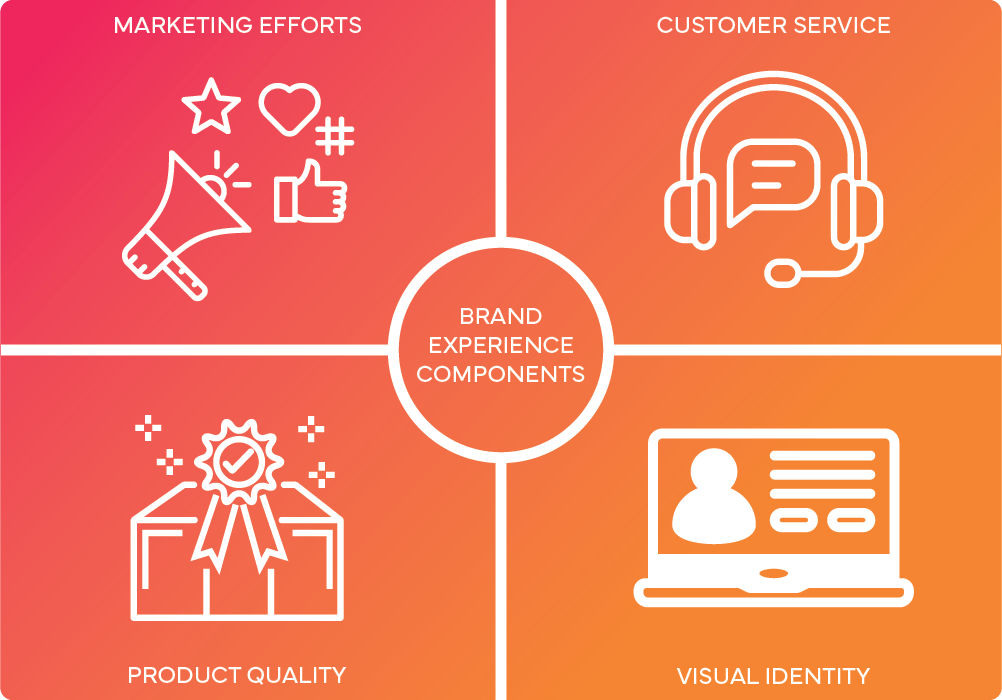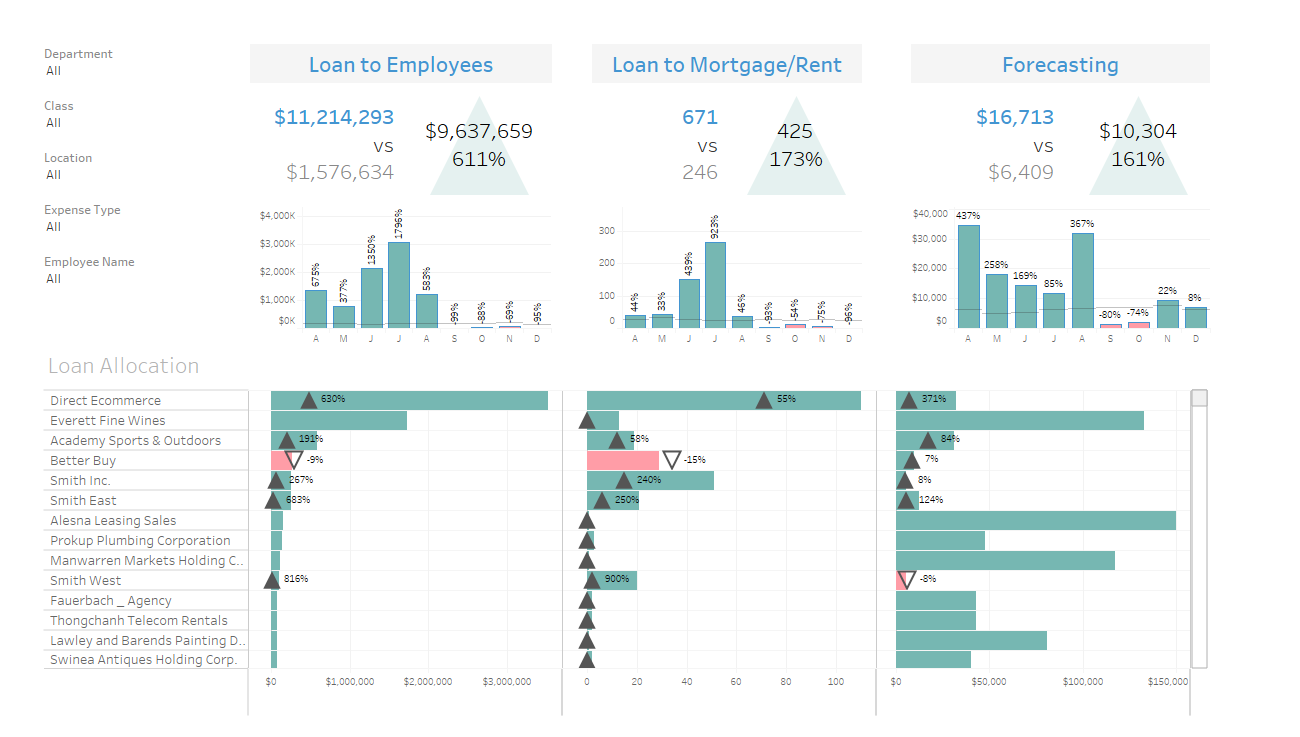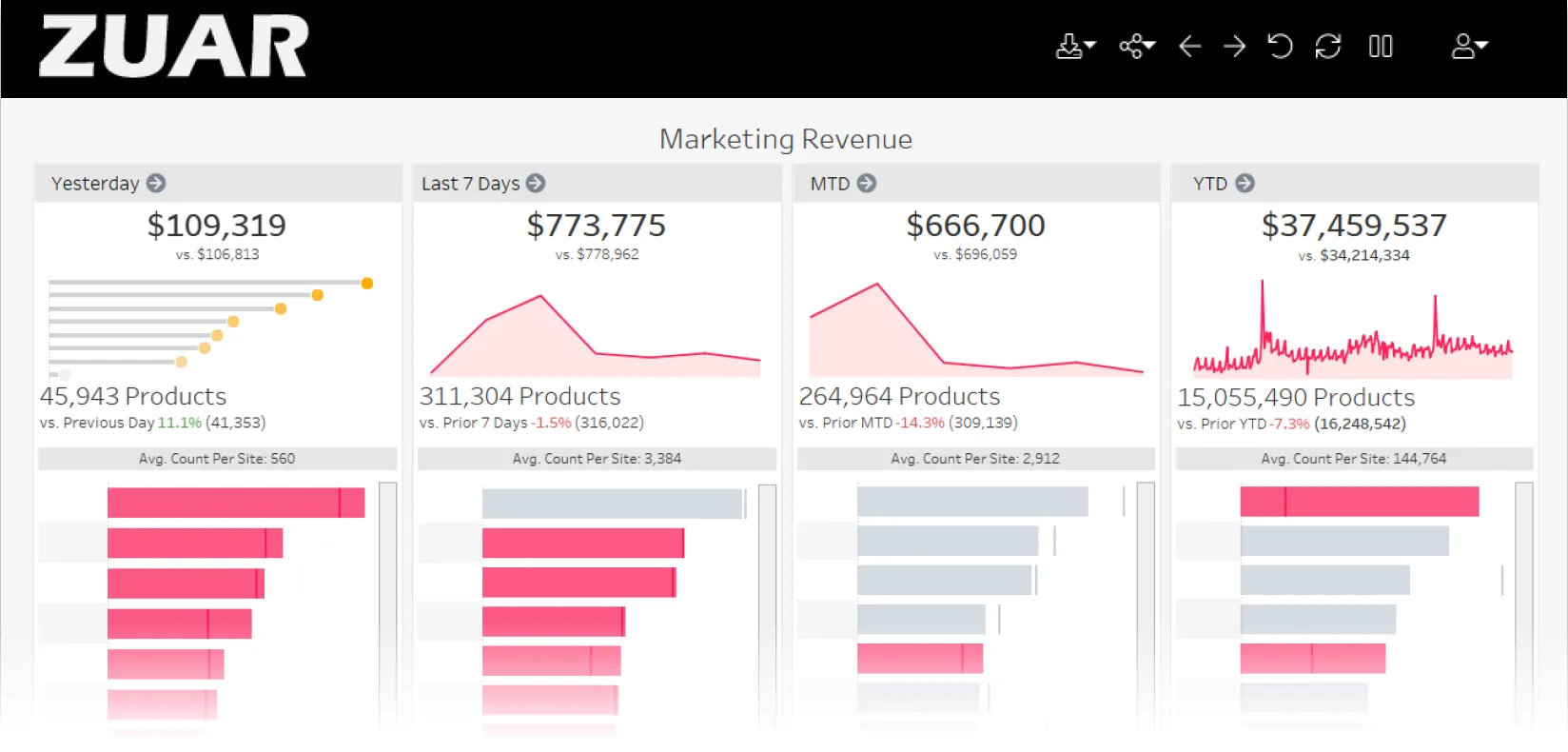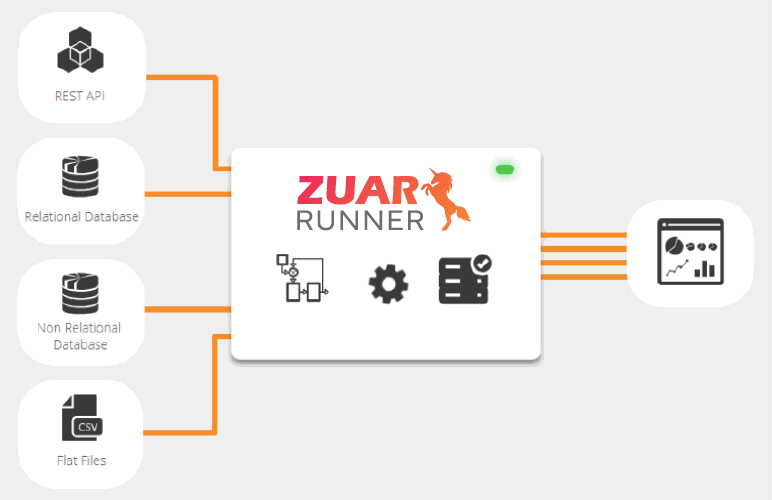What Is Brand Experience and Why Does it Matter?
Learn what brand experience is, why it matters, and what tools and techniques you can implement to create loyal customers.

Brand experience is a key factor in driving customer loyalty. But what is brand experience? This term refers to the emotional and psychological journey that customers undertake with a brand, with every interaction subtly sculpting their perception and loyalty.
No business can afford to overlook this element in an age where customer experience defines success. This article promises an in-depth look into molding these experiences into a strategic advantage to create loyal customers and drive revenue.
Understanding Brand Experience

Far from being a mere marketing buzzword, brand experience management is a strategic approach aimed at forging an emotional bond with customers through a feeling of kinship during their brand interactions.
It’s about creating a consistent positive brand image that resonates with both existing and prospective customers. Experiential marketing plays a crucial role in this process.
From the adventurous and action-packed branding of Red Bull to the sleek and intuitive product design of Apple, brand experience examples abound, showcasing how each interaction and point of engagement contributes to shaping the brand experience.
Consistency plays an indispensable role. A consistent brand experience mitigates confusion and establishes customer trust. However, pitfalls such as poor customer service, a damaged reputation, or controversy can have a negative impact, leading to a decline in customer loyalty.
Implementing a cohesive brand experience strategy can engage customers, differentiate the organization from competitors, and consistently deliver positive brand experiences, thereby influencing customer behavior and contributing to the overall success of the brand.

The Components of Brand Experience

The components that make up brand experience includes marketing efforts, customer service, product quality, and visual identity. Each of these plays a critical role in how customers perceive and interact with your brand.
Marketing Efforts
Marketing efforts greatly influence the formation of brand experience. They help create a unified brand image and manage customer perception and interaction with the brand.
In the era of data-informed decisions, real-time responses and insights have evolved into a significant paradigm shift. Using these insights, marketers can:
- Understand the reception and resonance of their campaigns
- Make more impactful decisions
- Recognize pivotal moments
- Consistently deliver positive interactions
These actions can greatly aid in establishing enduring brand loyalty and enhancing brand recognition.
See how Zuar can supercharge your data-driven marketing efforts:

Customer Service
Customer service holds the power to either enhance or diminish a brand experience. It directly influences customer satisfaction, loyalty, and the overall customer experience.
A key correlation for assessing customer loyalty is the one between those expressing brand satisfaction and favorability and those who remained customers over a given period.
In this context, the Net Promoter Score (NPS), a customer feedback metric formulated to gauge customer loyalty, comes into play. It asks customers about their likelihood of recommending a brand to a friend or colleague, providing valuable insights into customer satisfaction and loyalty.
Today’s customers have high expectations for timely and relevant messaging and customer service across all channels, particularly on social media where they anticipate brands to respond within minutes.
Learn how to create a self-service portal:

Product Quality
Product quality forms the bedrock of brand experience. It establishes the brand’s reliability, fostering positive experiences, and maintaining a consistent and trustworthy reputation.
The quality of a product significantly influences how customers perceive the brand experience and can lead to a decrease in customer complaints and returns, thereby boosting customer loyalty.
Favorable interactions with a brand can result in heightened confidence, perceptions of quality, and endorsement of the brand, all of which are pivotal in fostering customer loyalty.
Visual Identity
The face of a brand is its visual identity, which expresses the brand’s core and values, instantly forging an emotional bond with customers. From logos to color palettes, every visual element is a brand asset that plays a part in establishing the brand’s identity.
The impact of visual identity on customer perception is significant. It not only conveys a brand’s personality and values but also influences the perception of the brand, shaping customer experiences through the strategic use of color, typography, and imagery.

Brand Experience vs. User Experience
While occasionally used synonymously, brand experience and user experience are in fact two separate notions.
Brand experience is centered around the overall perception of a brand, while user experience focuses on the usability and functionality of a product or service.
For instance, user experience in marketing pertains to the holistic experience of users during their interaction with a product or service, with a primary emphasis on enhancing usability, accessibility, and satisfaction.
On the other hand, brand experience encompasses the enduring perceptions, emotions, and responses to the brand as a complete entity.
These two facets influence each other; positive user experiences can facilitate positive brand experiences, and vice versa, fostering a cohesive and satisfying customer journey.

Crafting a Winning Brand Experience Strategy
Designing a successful brand experience strategy can be a difficult undertaking, which includes grasping customer needs, synchronizing brand values, and utilizing digital channels for productive communication and interaction.
Understanding Customer Needs
The first and crucial step in designing a successful brand experience strategy is understanding the wants and necessities of the target audience.
To gather data on customer needs, companies can implement customer surveys, allowing customers to offer personalized feedback and providing valuable insights into their needs and preferences.
Market research plays a crucial role in understanding customer requirements. It offers insights through demographic analysis, tracks market growth potential, and identifies emerging customer trends, all of which aid in the creation of customized marketing strategies.
Aligning Brand Values
Ensuring alignment of brand values is pivotal in developing a successful brand experience strategy. It guarantees that the organization’s fundamental values and principles are accurately portrayed in the brand, communicates an authentic purpose to customers, and establishes familiarity and trust.
To align brand values with customer expectations, it is essential for companies to understand customer values, have clear and shared brand values within the organization, reexamine their mission and values for alignment with customer values, and fully comprehend customer expectations.
The absence of alignment between a brand’s values and actions can lead to diminished performance, a loss of trust and credibility, and ultimately weakening customer loyalty and the brand’s market position.
Leveraging Digital Channels
Digital channels have emerged as essential instruments for brands aiming to amplify their brand experience.
Businesses can leverage digital channels by creating a seamless online presence that aligns with their brand identity and values. Utilizing social media, websites, and mobile applications, companies can engage with customers in real-time, offering personalized content and interactive experiences.
By analyzing data from these platforms, businesses gain valuable insights into customer preferences and behaviors, enabling them to tailor their marketing strategies and improve customer service.
Additionally, digital channels provide opportunities for brands to tell their story, showcase their products and services through immersive content like videos or interactive demos, and build a community around their brand.
This digital engagement, when executed effectively, not only strengthens the brand experience but also fosters loyalty and advocacy among customers.

Measuring and Improving Brand Experience

Consistent evaluation and enhancement are fundamental to the management of brand experience.
Customer feedback provides valuable insights into customer perceptions and experiences, identifies strengths, and pinpoints areas for improvement, thereby guiding the optimization of the brand experience.
Real-time data can provide ongoing evaluation of customer sentiment and loyalty, enabling marketers to make informed decisions and improve strategies to enhance the overall brand experience.
Brand experience surveys serve as another tool for measuring customer satisfaction, identifying areas for enhancement, and gathering valuable data on customer preferences.

Tools for Measuring Brand Experience
To measure brand experience succinctly, businesses can implement various tools to gather data on their customers to gain a more comprehensive understanding of their behaviors, values, sentiment, and more.
The following subsections break down a few examples of the most popular types of tools to measure the brand experience.
Customer Feedback and Survey Platforms
Customer feedback and survey platforms quantify brand experience by collecting and analyzing direct customer input through surveys. These tools evaluate aspects like satisfaction, expectations, and service quality.

With built-in analytics, they identify trends and improvement areas, providing insights into customer loyalty and brand perception. This feedback is crucial for businesses to make informed decisions to improve their overall brand experience.
Social Media and Online Monitoring Tools
Social media and online monitoring tools measure brand experience by tracking brand mentions and sentiments across digital platforms.
These tools analyze real-time data from social media, blogs, and forums, assessing public perception and engagement with the brand. They identify the tone of customer interactions, providing insights into a brand's online reputation and helping businesses respond promptly to feedback.
This data is essential for companies to understand and improve their brand's public image and customer experience.
Analytics and User Behavior Analysis Tools
Analytics and user behavior analysis tools measure brand experience by providing insights into how users interact with a brand's digital properties.
These tools track user actions, such as page views, clicks, and time spent on a website or app, offering a clear picture of user engagement and preferences.
They help identify which features attract the most attention and where users face difficulties, allowing brands to optimize the user experience. Google Analytics may be the most prominent tool in this category.
By analyzing this data, businesses can understand customer journeys, refine their digital offerings, and make informed decisions to enhance the overall brand experience, ensuring it aligns with user expectations and needs.
Business Intelligence Solutions
The tools listed above are fantastic ways to gather customer data, but what do you do with that data? How to you get put these pieces together to get a holistic understanding of your customers? That's where BI solutions come in.
By extracting data from various platforms, data integration solutions like Zuar Runner can gather data from all of your data sources and consolidate it in a single data warehouse or lake.
This integration allows for a comprehensive analysis, combining insights from customer feedback, social media interactions, user behavior analytics, and other key metrics.
From their, data portal solutions such as Zuar Portal can be utilized to create unique analytics hubs tailored to each of your stakeholder's individual needs. These portals can be shared with executives, employees, vendors, customers, and more.

Learn more about Zuar Portal by trying out our free demo:

Real-World Examples of Exceptional Brand Experiences
Illustrations of successful brand experiences highlight the potency of storytelling, personalization, and emotional ties.
Red Bull

Take Red Bull as an example — they have created a powerful brand experience by transcending the product itself and investing in a lifestyle that their target audience aspires to.
They have accomplished this through high-energy marketing, sponsoring extreme sports events, and aligning with thrilling activities that embody their slogan, "Red Bull gives you wings."
By consistently associating the brand with these dynamic experiences, Red Bull has managed to become synonymous with energy, adventure, and pushing the limits, crafting a brand experience that's engaging and authentic to its core message.
Apple

Apple is another company that is often cited as a prime example of a company with an excellent brand experience. Apple’s approach to design, user experience, and customer service all contribute to this perception.
The brand’s consistency across all touchpoints, from packaging to advertising to post-purchase support, reinforces a premium experience that aligns with its premium pricing, creating a loyal customer base that values not just the products but the experience of being an Apple user.

Common Brand Experience Pitfalls and How to Avoid Them
During the process of creating a captivating brand experience, businesses may encounter various challenges.
One of the most common is inconsistency and lack of personalization, which can lead to a negative perception among customers and can risk disengagement and dissatisfaction.
Poor customer service is another potential pitfall that can significantly diminish brand experience by eliciting negative emotions and eroding trust.
To avoid these pitfalls, all individuals who represent the brand, such as employees and brand ambassadors, should embody the brand’s values to ensure a consistent and genuine brand experience.

The Future of Brand Experience
Looking ahead to the future of brand experience, it is expected that personalization, innovation in digital experiences, and the formation of meaningful customer connections will become the focal points.
The rise of personalization is transforming brand experience by catering to consumer preferences, fostering ongoing engagement, and strengthening customer loyalty.
Simultaneously, AI will play a significant role in enhancing brand experience by facilitating the development of cutting-edge digital experiences.
For instance, AI-powered recommendation systems have the ability to personalize product recommendations by analyzing a user’s browsing and purchase behavior, thereby increasing the relevance and appeal of the brand experience.
Prioritizing the establishment of meaningful connections with customers will facilitate a deeper understanding and alignment with customer values and needs, thus shaping the future of brand experience.

Implementing Brand Experience Strategies
In a world where customer loyalty is paramount, brand experience goes beyond the product or service to include every interaction a customer has with a brand.
From marketing efforts and customer service to product quality and visual identity, each component plays a key role in shaping a cohesive brand image.
When it comes to improving the brand experience, data is key. The effectiveness of your data strategy can make or break the success of your customer experience efforts. But that's where Zuar Labs can help.
As a team of seasoned data experts, we can work with you to gain a comprehensive understanding of your customer base and current data stack to recommend the tools and techniques that best fit your unique business needs.
From strategy creation to implementation and enablement, we can help guide you to success.
Learn more about our data solutions and services by scheduling some time with one of our data superheroes:





